Top Rankings
Norris School District ranks among the top 20% of public school district in Wisconsin for:
Category
Attribute
Diversity
Most diverse schools (Top 1%)
Student Attention
Lowest student:teacher ratio (Top 1%)
For the 2025 school year, there are 2 public high schools serving 37 students in Norris School District. This district's average high testing ranking is 2/10, which is in the bottom 50% of public high schools in Wisconsin.
Public High Schools in Norris School District have an average math proficiency score of 20% (versus the Wisconsin public high school average of 29%), and reading proficiency score of 20% (versus the 37% statewide average).
Minority enrollment is 62% of the student body (majority Black), which is more than the Wisconsin public high school average of 33% (majority Hispanic and Black).
Overview
This School District
This State (WI)
# Schools
2 Schools
650 Schools
# Students
37 Students
283,888 Students
# Teachers
10 Teachers
19,119 Teachers
Student : Teacher Ratio
4:1
4:1
District Rank
Norris School District, which is ranked within the bottom 50% of all 444 school districts in Wisconsin (based off of combined math and reading proficiency testing data) for the 2021-2022 school year.
The school district's graduation rate of 50% has stayed relatively flat over five school years.
Overall District Rank
#429 out of 450 school districts
(Bottom 50%)
(Bottom 50%)
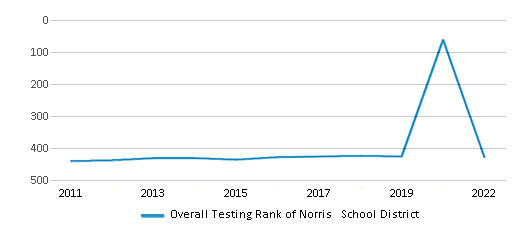
Math Test Scores (% Proficient)
≤20%
39%
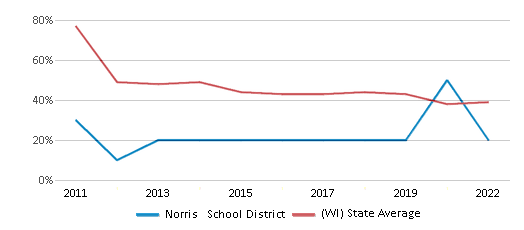
Reading/Language Arts Test Scores (% Proficient)
≤20%
38%
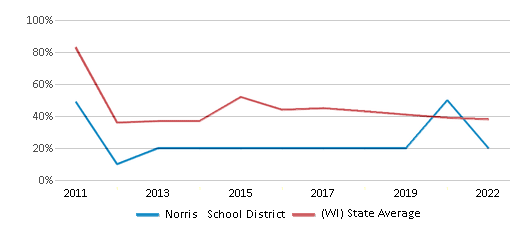
Science Test Scores (% Proficient)
<50%
44%
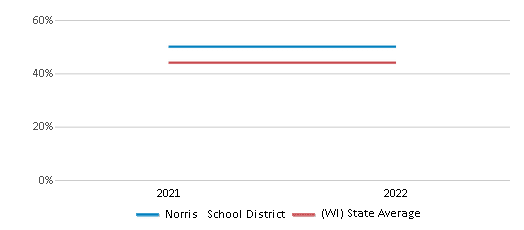
Graduation Rate
<50%
90%
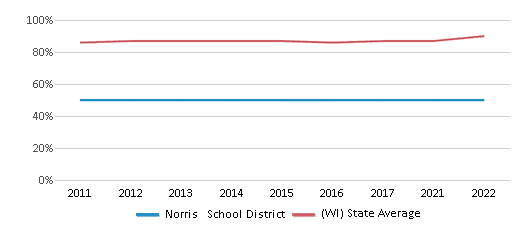
Students by Ethnicity:
Diversity Score
0.65
0.53
# American Indian Students
n/a
3,764 Students
% American Indian Students
n/a
1%
# Asian Students
n/a
12,424 Students
% Asian Students
n/a
4%
# Hispanic Students
6 Students
37,969 Students
% Hispanic Students
16%
13%
# Black Students
16 Students
26,677 Students
% Black Students
43%
10%
# White Students
14 Students
189,788 Students
% White Students
38%
67%
# Hawaiian Students
n/a
231 Students
% Hawaiian Students
n/a
n/a
# Two or more races Students
1 Student
12,795 Students
% of Two or more races Students
3%
5%
Students by Grade:
# Students in PK Grade:
-
831
# Students in K Grade:
-
1,002
# Students in 1st Grade:
-
1,047
# Students in 2nd Grade:
-
1,034
# Students in 3rd Grade:
-
1,111
# Students in 4th Grade:
-
1,219
# Students in 5th Grade:
-
1,204
# Students in 6th Grade:
-
3,040
# Students in 7th Grade:
3
5,054
# Students in 8th Grade:
3
6,447
# Students in 9th Grade:
6
65,723
# Students in 10th Grade:
8
65,364
# Students in 11th Grade:
9
65,630
# Students in 12th Grade:
8
65,182
# Ungraded Students:
-
-
District Revenue and Spending
Total Revenue
$3 MM
$13,869 MM
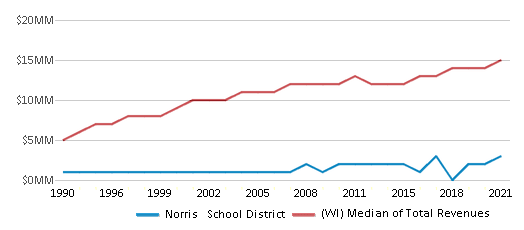
Spending
$2 MM
$13,846 MM
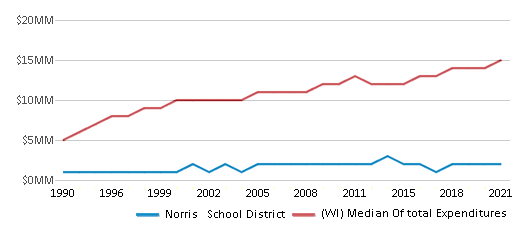
Revenue / Student (14-15)
$35,288
$13,583
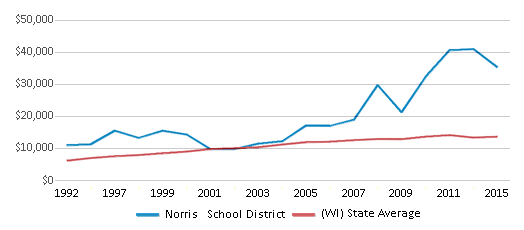
Spending / Student (14-15)
$37,019
$13,316
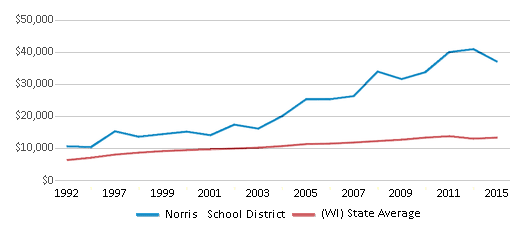
Best Norris School District Public High Schools (2025)
School
(Math and Reading Proficiency)
(Math and Reading Proficiency)
Location
Grades
Students
Rank: #11.
Norris Academy Virtual School
Alternative School
Charter School
Charter School
(Math: <50% | Reading: <50% )
Rank:
Rank:
8/
Top 30%10
W247s10395 Center Dr
Mukwonago, WI 53149
(262) 662-5911
Mukwonago, WI 53149
(262) 662-5911
Grades: K-12
| 24 students
Rank: #22.
Norris Academy
(Math: ≤20% | Reading: ≤20%)
Rank:
Rank:
2/
Bottom 50%10
W247s10395 Center Dr
Mukwonago, WI 53149
(262) 662-5911
Mukwonago, WI 53149
(262) 662-5911
Grades: K-12
| 13 students
Recent Articles

Year-Round Or Traditional Schedule?
Which is more appropriate for your child? A year-round attendance schedule or traditional schedule? We look at the pros and cons.

Why You Should Encourage Your Child to Join a Sports Team
Participating in team sports has a great many benefits for children, there is no doubt. In this article you will learn what those benefits are.

White Students are Now the Minority in U.S. Public Schools
Increasing birth rates among immigrant families from Asia and Central and South America, combined with lower birth rates among white families, means that for the first time in history, public school students in the United States are majority-minority. This shift in demographics poses difficulties for schools as they work to accommodate children of varying language abilities and socio-economic backgrounds.





